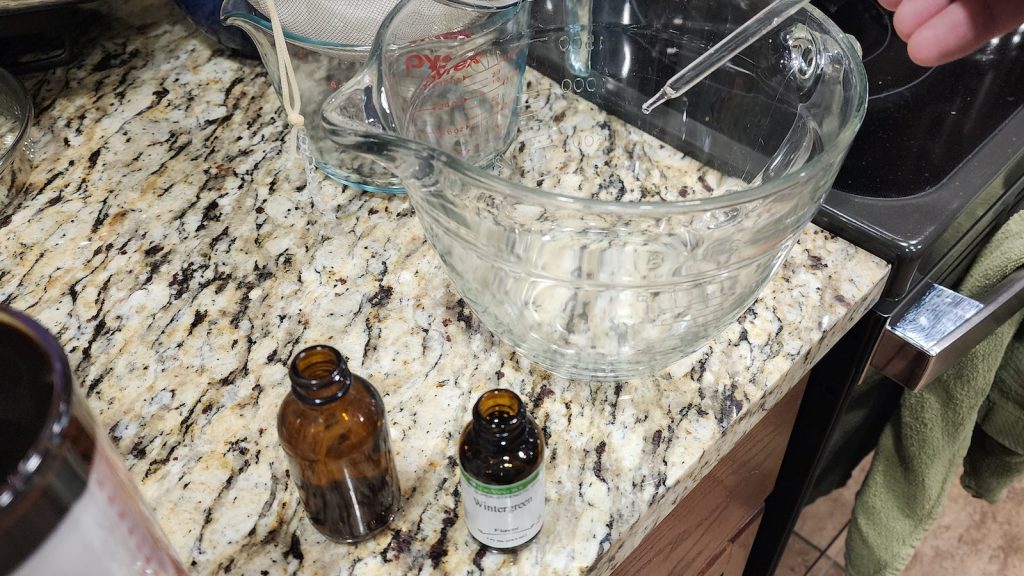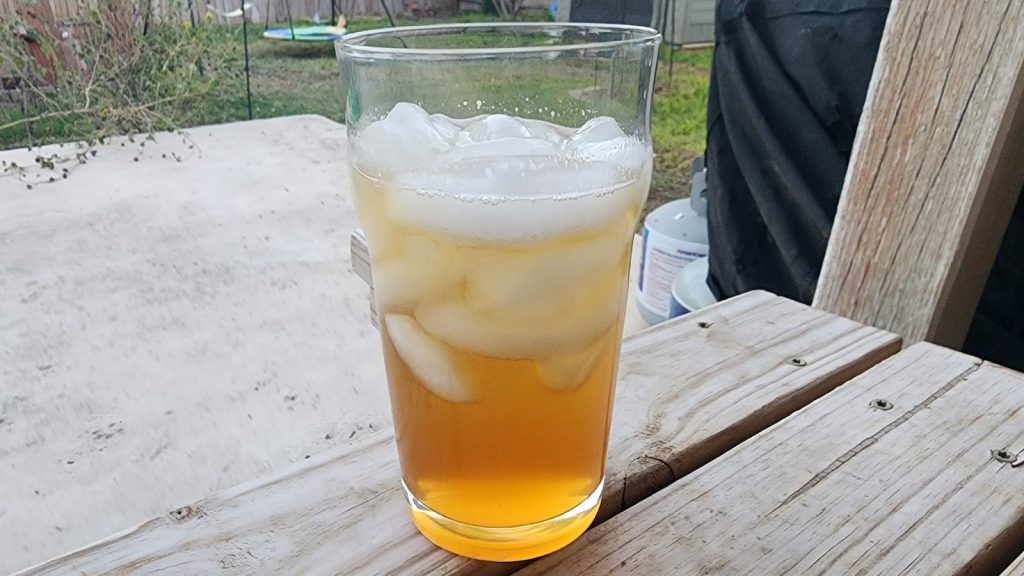Author: Will Lovell
I’m not sure how it happened, I can barely recall when it happened, but apparently at some point, I promised my neighbor’s kids that I’d make them a batch of homemade root beer. While I blame this lapse in memory on the multiple Dos-A-Ritas I consumed with my buddy, making scratch root beer didn’t seem too difficult, so as a man of my word, I accepted the challenge and dove into researching the various approaches.
As it turns outs, root beer isn’t as simple as I originally presumed, and I learned some interesting stuff about this delicious soda. While I was aware a number of interesting ingredients are used to make traditional root beer, sassafras is what I always associated with it, though commercial use of the actual root bark was outlawed by the FDA in 1976 due to it possessing potential carcinogenic properties. In its place, soda makers were able to use sassafras extract, which is said to contribute similar flavors.
Considering how little sassafras is used to make a batch of root beer, along with the fact nobody would be consuming massive amounts of it, I threw caution to the wind and opted to use the real deal for this batch. I also picked up some sassafras extract to use in future batches for comparison, but for this initial go at root beer, I went the more traditional route. Conveniently, I was able to source all of the ingredients from Amazon, and once everything was in my possession, it was time to whip up my first batch of Rooted In Tradition Root Beer!
| Making Rooted In Tradition Root Beer |
After spending a bunch of time perusing root beer recipes, I realized the possibilities are nearly endless, and that most result in a syrup that can be added to sparkling water. I took inspiration from what I found online when coming up with my Rooted In Tradition recipe, which I planned to mix into a full keg of finished soda.
Rooted In Tradition Root Beer
5 Cups Water
0.5 cups/120 mL sassafras root bark (or 0.02 cups/5 mL sassafras extract)
0.5 cups/120 mL sasparilla root
0.5 cups/120 mL dandelion root
1 star anise
4 allspice berries (cracked)
1/2 cinnamon stick
0.25 cups/60 mL molasses
4 drops wintergreen extract
6 cups/1.4 liters table sugar
After measuring out all of the roots and aromatics, I enlisted the help of my neighbor’s kids to add them to 5 cups/1.2 liters of boiling water.
Since they’re the ones holding me to my promise, I figured they could have a hand in making it!
After boiling for 20 minutes, I measured out and added the molasses.
Once the mixture had boiled for another 5 minutes and the molasses was fully dissolved, I cut the heat and let it chill for a bit, during which I added 4 drops of wintergreen extract to an empty vessel.
When the mixture was cool enough to handle, I poured it through a fabric bag to filter out all the solids into the same vessel the wintergreen was in.
I then added the sugar to this aromatic liquid and stirred until it was fully dissolved.
This sweet concoction was then boiled for an additional 10 minutes before being chilled.
At this point, my homemade root beer syrup was done and ready for use! One rule-of-thumb is to blend 1 part syrup to 6 parts water, which when making a smaller volume, amounts to approximately 3 tablespoons/45 mL of syrup per glass of plain sparkling water. However, in keeping with my promise, I combined 5.25 cups/1.25 liters of the syrup with 2 gallons/7.5 liters of water in an Oxebar Keg.
The filled keg was placed in my kegerator and burst carbonated overnight before I reduced the gas to serving pressure. Given this was a soda and not a beer, I aimed for a slightly higher carbonation level of around 2.8 to 3 volumes.
| IMPRESSIONS |
Root beer has a long and interesting history stretching back to the late 19th century, though it arguably gained its popularity during American Prohibition. Offering a drinkers a unique combination of flavors imparted by various wild roots along with a pleasant sweetness and fizz. While traditionally made with sassafras, modern commercial root beers are not made with this aromatic bark, as it was outlawed due to containing potential carcinogens. But that doesn’t mean one can’t purchase some for use on their own use!
Having consumed a lot of commercial root beer over the years, I have to say that my Rooted In Tradition was easily the most aromatic version I’ve ever experience. When throwing all of the ingredients together, I began to wonder if this concoction would even resemble the A&W, Mug, and Dad’s I grew up drinking. Lo and behold, it absolutely did, though I feel it had an even more complex character overall, which was the opinion of nearly everyone I shared it with including Marshall and his kids.
For those who are questioning my decision to serve a potentially carcinogenic soda to children, well… I didn’t. I’m pretty confident sipping a few glasses of the real deal wouldn’t have caused cancer, but I’d rather be safe than sorry, so I made another batch using sassafras extract rather than the actual root bark. As expected, this version had a more pungent sassafras note that somewhat overpowered the other ingredients, but it was still very much enjoyed by the kids. The only change I’d consider making in future batches of Rooted In Tradition would be to use about 10% less sugar just to see how it works out, only because as the brewer, I can.
If you have thoughts about this recipe or experience making something similar, please feel free to share in the comments section below!
Support Brülosophy In Style!
All designs are available in various colors and sizes on Amazon!
Follow Brülosophy on:
FACEBOOK | TWITTER | INSTAGRAM
If you enjoy this stuff and feel compelled to support Brulosophy.com, please check out the Support page for details on how you can very easily do so. Thanks!






















5 thoughts on “Brü It Yourself | Rooted In Tradition Root Beer”
Best post on brulosophy ever.
Thank you for the detailed post. I’ve been thinking about making a root beer for the kids for a while and really didn’t know where to start!
The ingredient you link to (thank you!) are sold in ounces, and the recipe is in cups. Do you happen to remember about how those two relate for the sassafras, sasparilla, and dandelion?
The 1oz pack oz sassafras root Cubes was plenty for a 1/2 cup. I have just a smidge left over, but not enough for another batch.
Craft birch beer and sarsparilla are often in the same general flavor family as craft root beers. There are huge variations between makers so I’d hesitate to ever lump them completely together, but they seem like a great avenue for people who like to tinker with soft drinks. While I’ve never made root beer, I’ve made ginger beer as a soft drink and that’s a great option too.
This sounds AMAZING. We try to avoid soda as much as possible because my husband’s got the sugar and we don’t want the sugar to take his foot. Buttttt, a little Root Beer (most likely) won’t kill him. I have a few 2.5 gallon torpedo kegs I have been experimenting with making carbonated mixed drinks in and they would be perfect for this. I haven’t been this stoked for rootbeer since I took acid with friends and drove around half of New Jersey looking for an A&W restaurant because we saw a commerical on TV… only to realize there were no A&W’s in NJ. Sigh. The internet would have been so helpful in those days, but I digress. I am so making this.
Cheers,
Will